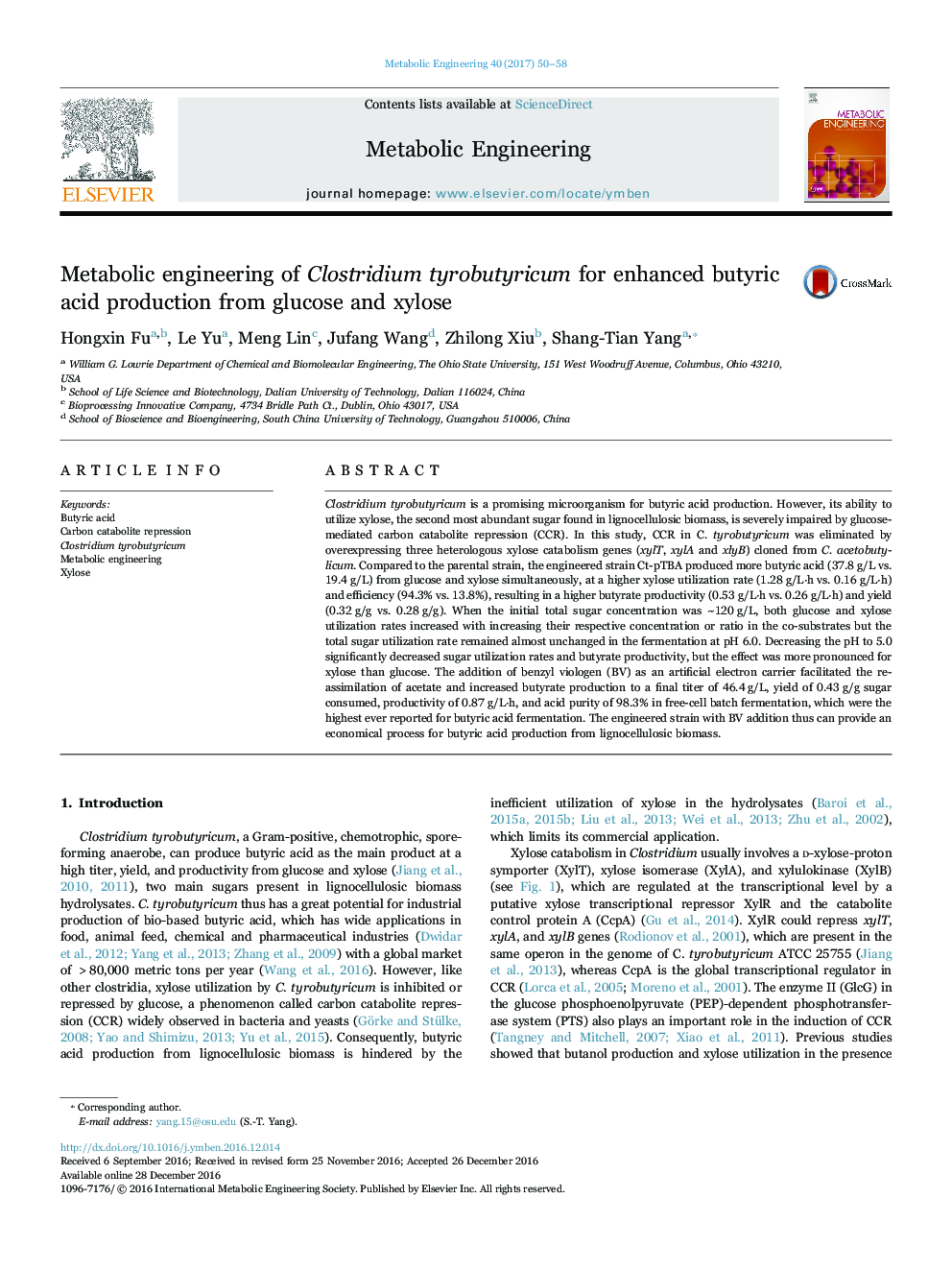| کد مقاله | کد نشریه | سال انتشار | مقاله انگلیسی | نسخه تمام متن |
|---|---|---|---|---|
| 6452702 | 1418338 | 2017 | 9 صفحه PDF | دانلود رایگان |

• C. tyrobutyricum was engineered to produce butyrate from glucose and xylose.
• C. acetobutylicum xylT, xylA and xlyB genes were introduced into C. tyrobutyricum.
• Butyrate was produced from glucose and xylose without carbon catabolite repression.
• Benzyl viologen as an artificial electron carrier facilitated acetate re-assimilation.
• Butyrate production (46.4 g/L, 0.43 g/g, 0.87 g/L·h) at a 98.3% purity was obtained.
Clostridium tyrobutyricum is a promising microorganism for butyric acid production. However, its ability to utilize xylose, the second most abundant sugar found in lignocellulosic biomass, is severely impaired by glucose-mediated carbon catabolite repression (CCR). In this study, CCR in C. tyrobutyricum was eliminated by overexpressing three heterologous xylose catabolism genes (xylT, xylA and xlyB) cloned from C. acetobutylicum. Compared to the parental strain, the engineered strain Ct-pTBA produced more butyric acid (37.8 g/L vs. 19.4 g/L) from glucose and xylose simultaneously, at a higher xylose utilization rate (1.28 g/L·h vs. 0.16 g/L·h) and efficiency (94.3% vs. 13.8%), resulting in a higher butyrate productivity (0.53 g/L·h vs. 0.26 g/L·h) and yield (0.32 g/g vs. 0.28 g/g). When the initial total sugar concentration was ~120 g/L, both glucose and xylose utilization rates increased with increasing their respective concentration or ratio in the co-substrates but the total sugar utilization rate remained almost unchanged in the fermentation at pH 6.0. Decreasing the pH to 5.0 significantly decreased sugar utilization rates and butyrate productivity, but the effect was more pronounced for xylose than glucose. The addition of benzyl viologen (BV) as an artificial electron carrier facilitated the re-assimilation of acetate and increased butyrate production to a final titer of 46.4 g/L, yield of 0.43 g/g sugar consumed, productivity of 0.87 g/L·h, and acid purity of 98.3% in free-cell batch fermentation, which were the highest ever reported for butyric acid fermentation. The engineered strain with BV addition thus can provide an economical process for butyric acid production from lignocellulosic biomass.
Journal: Metabolic Engineering - Volume 40, March 2017, Pages 50–58